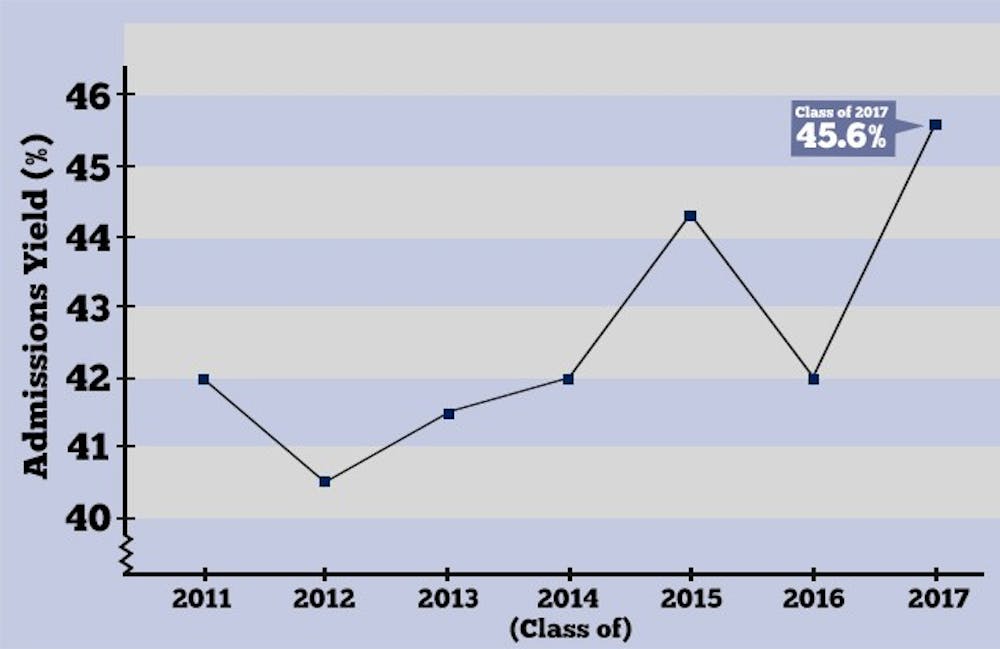Duke’s admissions yield has reached its highest point since 1987.
Approximately 45.6 percent of admitted applicants accepted their offer of admission, Director of Undergraduate Admissions Christoph Guttentag said. This is an increase from last year’s yield of 42 percent.
Guttentag attributed the yield both to an increased number of early decision acceptances—which are binding—and to an increase in regular decision yield. This year, 44 percent of the class was admitted early, compared to 38 percent last year.
“It wasn’t done with yield in particular in mind, but we knew that would be a result,” Guttentag said of the decision to admit more students via early decision.
The class also includes 75 students from a waitlist of more than 1,000, he said. The University finished admitting students off of the waitlist by the end of May.
The Class of 2017 is demographically similar to the Class of 2016, Guttentag noted. The presence of students of color stayed nearly the same, going from 47 to 46 percent, though there was a slight increase in Latino students. The number of international students also increased, going from 148 to 172. The Class of 2017 additionally includes more students from the Carolinas, a total of 13.5 percent from North and South Carolina versus 12 percent last year. The four states most represented in this year’s class are the same as in last year’s—North Carolina, California, New York and Florida, respectively.
“I don’t feel that there was any big shift in the character of the class,” Guttentag said.
He noted that the figure will likely dip slightly over the next month due to a phenomenon known as “summer melt”—the tendency of a small number of students to defer their admission in order to take a gap year. But the yield should not drop by more than a tenth of a percent, he said, and the class size should stay between 1,725 and 1,735 students.
Duke received 29,201 regular decision applications this year, combining with early decision for a total of 31,741 applications, an increase of 0.4 percent from last year. There were 2,897 applicants accepted via regular decision.
As in years past, students cited the University’s academics and sense of community as reasons for their decision, among other factors.
“Duke’s ridiculously generous financial aid, lively student body and attentive staff sealed the deal for me,” said incoming freshman Kelley White. “I couldn’t imagine finding a better fit in any other university.
Several of Duke’s peer institutions have also reported higher yields this year as well. Among them are Northwestern University, whose yield rose from 41.5 percent to 45.3, the University of Chicago, which rose from 46 to 55 percent and Brown University, which rose from 55.8 to 60 percent, according to the schools’ respective student newspapers.
Dramatic jumps in yield, however, can pose problems for universities, Michael Schoenfeld, vice president for public affairs and government relations, noted in a July 15 email.
“You don’t want to see year to year variations because it could be very disruptive to things like class sizes [and] housing,” Schoenfeld said.
Get The Chronicle straight to your inbox
Signup for our weekly newsletter. Cancel at any time.

